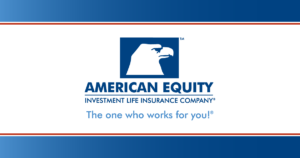Roughly one-quarter of newly issued life insurance policies have a waiver of premium rider. That makes the WOP rider the #1 added on rider of the various life insurance riders available.
So, what is the waiver of premium rider and why do so many people choose to add it to their policy? Before we answer these questions and get to the specifics of the WOP rider, let’s cover some basics.
What is life insurance?
A life insurance policy is a type of paid contract between the owner and the insurance company. The owner of the policy takes out the contract, called a policy, on the life of the insured for the benefit of a beneficiary. Upon the death of the insured, the insurance company pays a death benefit to the beneficiary.
There are several types of coverage to choose from, such as Term Life Insurance, Universal Life Insurance and Whole Life Insurance. Different types of policies are designed for different purposes.
And among permanent life insurance policies, there are various ways you can design each policy, including the addition of different riders, that help maximize the performance of the policy.
Some additional types of coverage that benefit from a waiver of premium rider are:
Bottom line. If you are getting an insurance policy, it is in your best interest to investigate how much more you will be paying to get a waiver of premium rider. Because often, the benefit far exceeds the cost.
Waiver of Premium Rider
The waiver of premium rider represents the top choice of the different life insurance riders available. And as you will see in the following article, there are great reasons why.
If you are seriously injured or suffer an illness that leaves you disabled, your life insurance premium must still be paid. Often, such terrible life changing events can ruin you financially. Among the casualties are insurance policies.
One way to avoid such a loss to your cash value life insurance is with a waiver of premium rider. This is a special add-on to life insurance that pays all your insurance premium owed to the carrier if you suffer a total disability. Essentially, your premium is waived, as the life insurance company pays your tab.
The phrase ‘total disability’ may be defined differently with different insurance companies. In general, the term total disability refers to a long-term condition that is serious enough to stop you from going to work, preventing you from earning any income. It can include loss of sight or a major body part, paralysis and severe illnesses.
For example, if you become totally disabled, your waiver of premium rider will pay any and all premiums payments due to the carrier. And this will continue indefinitely until the end of the term or for the life of the insured, depending on the type and length of coverage.
Who needs a waiver of premium benefit?
If you do not have a ready source of income or cash put away you may benefit from the peace of mind provided by the waiver of premium rider. If you become totally disabled with term life, there is no cash value to pull from.
If you cannot make your premium payment, your policy enters into a grace period of 30 days. After the grace period ends, your policy will lapse, you will no longer be insured and the life insurance company keeps all your premiums paid.
For someone that has a permanent life insurance policy, the insurance company will pay premiums from the policy’s cash value. Over time the cash value account will deplete. Once the cash value is gone, the policy will lapse for failure to pay premiums.
Further, the waiver of premium option is very useful for people whose occupation possess higher risks. High risk professions include police officers, pilots, firefighters, chiropractors and several others.
If you have a higher risk of becoming totally disabled, then it makes sense to add additional insurance protection.
Waiver of Premium Rider Criteria
Most companies offer this policy for applicants between the ages between 18 and 60. After the age of 65, the premium rider drops off the policy. This is due in part because age 65 was the age most people used to retire. However, it is also because more people are disabled after age 65, as you risk of disability increases with age.
Additionally, if you have pre-existing conditions you may not be eligible for the rider. The insurance company may not be willing to take on the additional risk of having to pay out the premium on a policy on a high risk applicant. Generally, carriers will allow a WOP rider on applicants who qualify at a standard rate class or better.
When is the WOP rider triggered?
The waiver of premium does not become suddenly active as soon as you are out of action. Though the time period may vary based on your insurance company, most waiver of premium riders require an elimination period before the rider kicks in and begins to pay your premium payments.
A typical waiting period is around 6 months after you are diagnosed with a qualifying disability, typically consisting of critical illness or serious injury. In this compulsory ‘wait period’ you still have to pay your premiums. But you can later claim reimbursement for any premiums paid during the elimination period.
Upon becoming totally disabled, the insurance company typically requires a few documents as evidence of your condition. An attending physician’s statement demonstrating you condition, which lists the history, diagnosis, date of treatment, progress and prognosis.
Additionally, your carrier may require notice form the Social Security Administration (SSA) demonstrating that you are currently eligible to receive disability benefits.
Waiver of Premium Rider Pros and Cons
Pros:
- Pays your life insurance premiums so you can avoid having your policy lapse or tapping into your cash value, diminishing your total death benefit.
- Can also be designed to cover additional premiums, such as paid-up additions
- Some term life WOP riders allow the policy to be converted and still retain the WOP rider
- You can use the money that was going towards life insurance to pay for whatever you choose, including medical costs, home modifications, in-home care, etc.
- Another advantage of the waiver of premium rider is that there is no limit to the number of times that you can use it. So if you have a recurring illness, you may even be able to skip this initial wait period the second time around.
Cons:
- It adds additional life insurance costs to your policy’s premium payments between 10-25%.
What other life insurance riders are available?
There are different life insurance riders to choose from. Apart from the waiver of premium rider, some of the best life insurance riders include:
- Guaranteed insurability rider
- Disability income rider
- PUA rider
- Term Rider
- Long-term care rider
- Chronic illness rider
- Critical illness rider
- Child rider
- Accelerated death benefit rider
- Accidental death benefit rider
- Return of premium rider
Conclusion
If you are interested in adding the WOP rider or any of the above riders to your policy, please let us know before hand. Most of these riders need to be added prior to issuing your policy.





